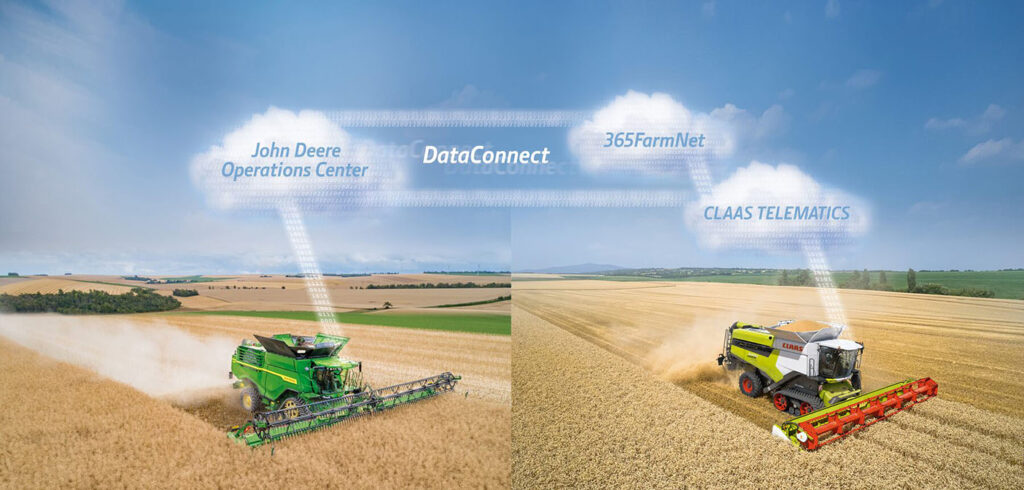The cloud-based DataConnect system that enables the exchange of machinery data between CLAAS, 365FarmNet and John Deere is now commercially available, with further partners to follow soon.
Similar to the way ISOBUS enables different brands of equipment to communicate in the paddock, DataConnect is designed to connect multiple manufacturer cloud platforms, so data can be securely and smoothly exchanged between them. It allows users to view all of their mixed-brand fleet information within the single data platform of their choice. Previously, viewing such information required duplicating effort by using each manufacturer’s corresponding but separate platforms or web portals.
The structure of this new direct cloud-to-cloud solution enables a seamless and automated data flow without any effort required by the customer. The real-time data exchange allows a live overview of the whole machinery fleet. Furthermore, DataConnect works without any additional hardware and software components and ensures secure data handling.
With this new approach, customers can view five different machinery data sets for their fleet: current machine location; historical machine location; fuel tank level; status of the machine in the field; and machine speed.
Customers can decide which company’s digital platform they prefer to use, to display all the data. As soon as they are connected, other manufacturers’ machines appear automatically. Machines are either displayed with icons in the respective brand’s colour combination or are visible in the icon’s information panel. Further partners and functions will be announced in due course.
“DataConnect allows customers who have a mixed fleet or are in the process of transitioning from one manufacturer to another, to have their data seamlessly connect,” said Ben Kelly, precision ag segment manager, John Deere. “By simplifying the way farmers collect data across their fleet, we are helping them compile high-quality information and insights. This is vital given the results gained through precision agriculture are directly linked to the quality of the data fed into the system.”



